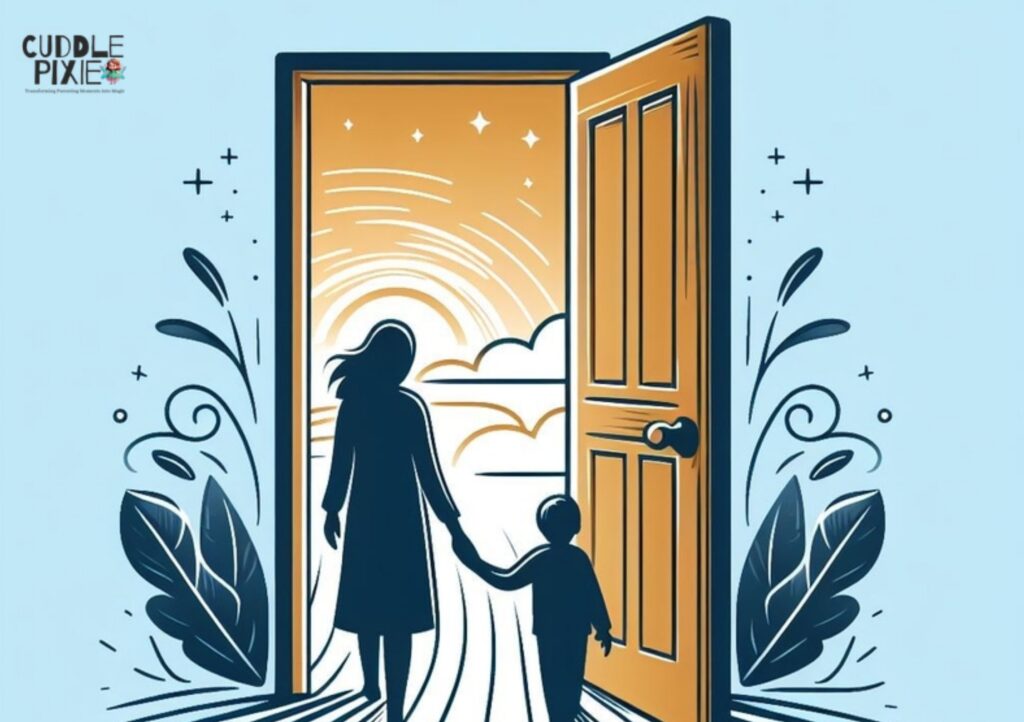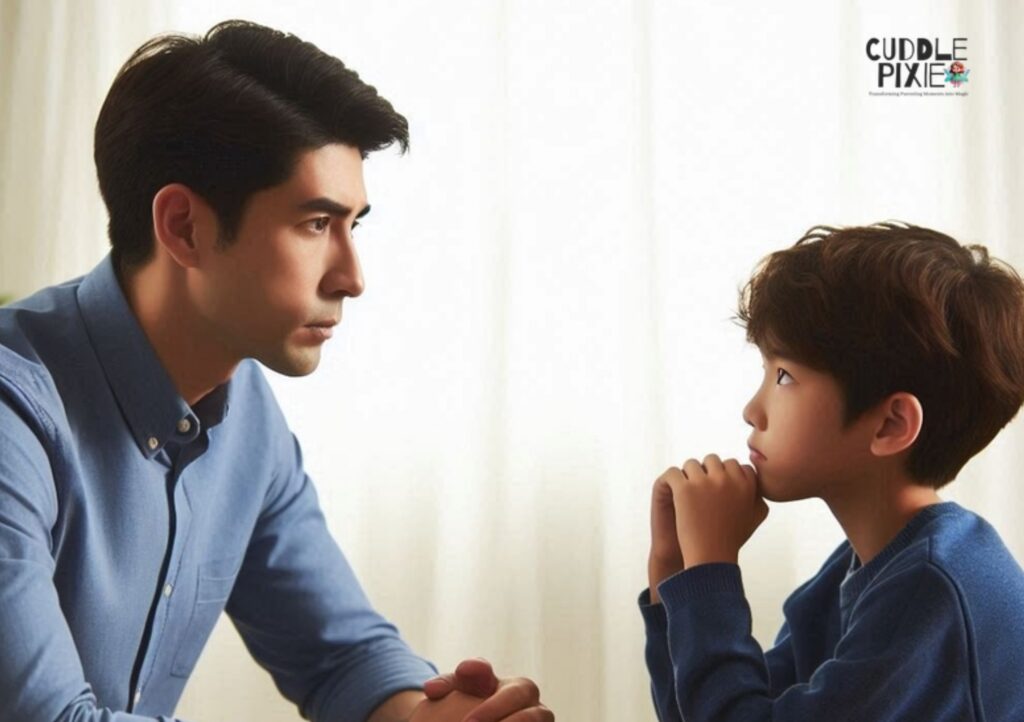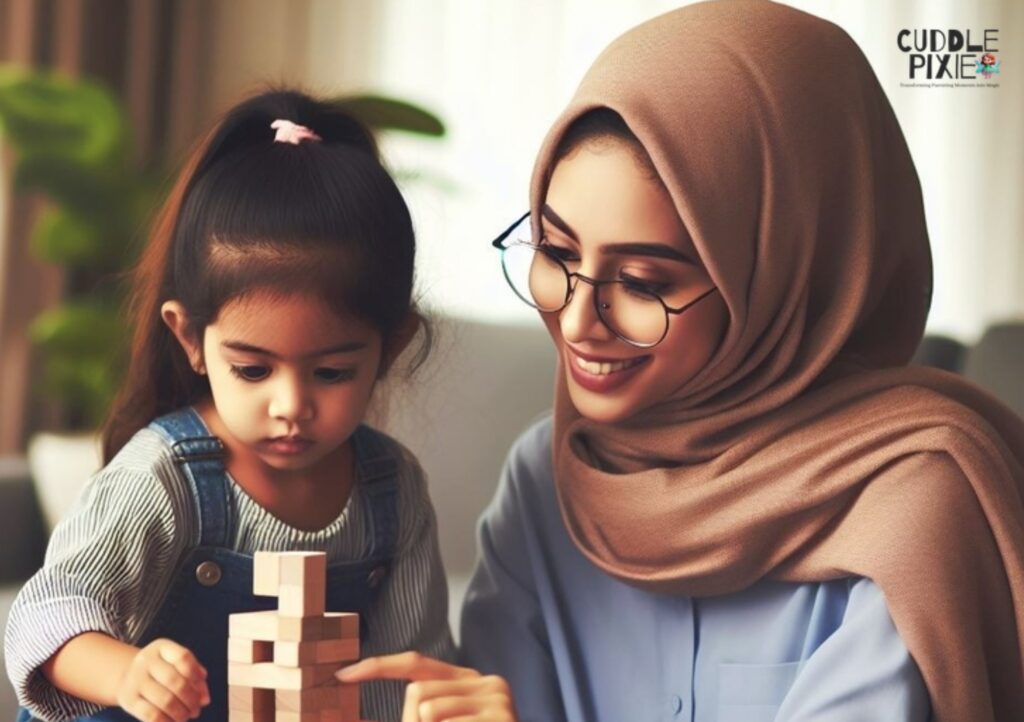Ever feel like your child speaks a different language? Or maybe you just can’t seem to connect? Well, you’re not alone! Talking to kids, especially as they grow older, can be tricky. But don’t worry, there are ways to bridge the gap and build a strong foundation of trust and understanding.
This article is your guide to effective communication with your child. We’ll explore tips and tricks to turn those one-word answers into open conversations, and those grumpy silences into moments of connection.
In This Article
Listen Up! The Power of Active Listening
Imagine you’re telling your friend a story, but they keep interrupting or looking at their phone. Not a great feeling, right? That’s why active listening is key when talking to your child. It shows them you’re interested and truly want to hear what they have to say. Here’s how to be an active listener:

- Put away distractions: Silence your phone, turn off the TV, and give your child your full attention.
- Make eye contact: Show them you’re engaged in the conversation.
- Use your body language: Nod your head, lean in, and avoid crossing your arms.
- Ask open-ended questions: Instead of a yes/no question, ask “Why?” or “How?” to encourage them to elaborate.
- Reflect back: Briefly repeat what you heard to show you’re understanding them. For example, “So you’re feeling frustrated because you can’t play outside today?”
By actively listening, you create a safe space for your child to share their thoughts and feelings, strengthening your bond and building trust.
Opening the Doors of Communication
Creating an environment where your child feels comfortable talking to you is crucial. Here are some tips:

- Make time for regular chats: Even if it’s just 15 minutes a day, set aside dedicated time to talk without distractions.
- Find common ground: Talk about things they’re interested in, like their hobbies or favorite shows.
- Share your own stories: Let them see you were once a kid too! Talk about your own experiences and feelings.
- Be patient: Don’t expect them to pour their heart out right away. Building trust takes time.
- Embrace their emotions: Let them know it’s okay to feel happy, sad, angry, or scared. Validate their feelings and avoid dismissing them.
Remember, communication is a two-way street. By showing your child you’re interested in their world, you encourage them to open up to you.
Beyond Words: The Magic of Nonverbal Communication
Communication isn’t just about words. A lot is said through body language and tone of voice. Here’s how to be mindful of your nonverbal cues:
- Keep your tone gentle: Avoid yelling or lecturing. Use a calm and understanding voice.
- Maintain eye contact: But don’t stare them down! A friendly gaze shows you’re engaged.
- Offer a hug or a pat on the back: Physical touch can be comforting and reassuring.
When Things Get Tough: Handling Conflict
Disagreements are a normal part of life, even with your child. Here are some tips for healthily navigating conflict:

- Stay calm: Take a deep breath and avoid getting angry or frustrated.
- Listen to their perspective: Try to understand why they feel the way they do.
- Focus on problem-solving: Work together to find a solution that works for both of you.
- Be willing to compromise: Sometimes, meeting each other halfway is the best approach.
By teaching your child healthy conflict resolution skills, you equip them to handle tough situations throughout their lives.
Building Trust: The Foundation of Strong Communication
Trust is the bedrock of any strong relationship. Here are some ways to build trust with your child:
- Keep your promises: If you say you’ll do something, follow through. This shows your child they can rely on you.
- Be honest and open: Don’t lie to your child, even about small things.
- Respect their privacy: Knock before entering their room and respect their boundaries.
- Apologize when you’re wrong: Everyone makes mistakes. Be willing to admit yours and show your child how to take responsibility.
By building trust, you create a safe space for your child to come to you with anything, big or small.
Remember: Communication is a journey, not a destination. There will be ups and downs, but by following these tips, you can strengthen your connection with your child and build a foundation of trust and understanding that will last a lifetime.
Beyond Words: Fun Activities to Boost Communication

Learning doesn’t have to be boring! Here are some fun activities to strengthen your communication skills with your child:
- Play charades or Pictionary: These games encourage creativity and non-verbal communication.
- Do a puzzle together: Working towards a common goal can spark conversation and teamwork.
- Go for a walk or bike ride: This is a great way to have a relaxed conversation in a natural setting.
- Tell stories together: Take turns adding sentences to a story, creating a fun and collaborative narrative.
- Write letters or notes to each other: This is a fun way to express yourselves creatively and practice writing skills.
The Toolbox: Practical Tips for Different Age Groups
Every child is unique, and their communication needs will change as they grow. Here are some pointers for different age groups:

Toddlers (1-3 years old)
- Focus on nonverbal communication: Use gestures, facial expressions, and simple words to communicate.
- Read together: Reading exposes them to new vocabulary and helps develop conversation skills.
- Label their emotions: Help them understand and express their feelings by saying things like, “It looks like you’re feeling frustrated.”
Preschoolers (4-5 years old)
- Play games that involve talking: Board games, storytelling games, and pretend play can all encourage communication.
- Answer their questions: Their curiosity is peaking! Encourage them to ask questions and provide clear, age-appropriate answers.
- Set clear expectations: Use simple “I” statements like “I feel happy when you clean up your toys.”
School-aged Children (6-12 years old)
- Have regular family meals: This is a great time to connect and chat about your day.
- Encourage them to talk about their day: Ask open-ended questions about school, friends, and activities.
- Limit screen time: Excessive screen time can hinder communication skills. Encourage face-to-face conversations.
Teenagers (13-18 years old)
- Respect their privacy: Give them space but let them know you’re always there to listen.
- Avoid lectures: Teens often respond better to open conversations than lectures.
- Find common ground: Discuss topics they’re interested in, like music, movies, or current events.
Remember, these are just guidelines. Be flexible and adapt your communication style to fit your child’s individual needs and personality.
The Gift of Communication: Building a Lasting Bond

Talking to your child isn’t just about getting information or giving instructions. It’s about building a connection, a safe space where they feel loved, supported, and understood. By creating open communication, you’re giving them the gift of being heard and valued.
Think of it like building a bridge. With every conversation, brick by brick, you’re creating a strong foundation for your relationship. This bridge allows you to reach out to them in times of need, celebrate their victories, and weather any storms together.
Remember, communication is a two-way street. It’s about listening just as much as talking. By putting away distractions and truly focusing on what your child has to say, you show them you care. You’re not just a parent, you’re their confidant, their cheerleader, and their biggest supporter.
As your child grows, their communication needs will change. Be flexible and adapt your approach. Embrace their curiosity, answer their questions honestly, and don’t be afraid to have fun together. Laughter and shared experiences can be powerful communication tools.
Most importantly, be patient. Building trust and understanding takes time. There will be bumps along the road, moments of frustration, and maybe even slammed doors. But by persevering, by showing your child you’re always there for them, no matter what, you’ll create a bond that will last a lifetime. So keep talking, keep listening, and keep building that bridge. The rewards are immeasurable.
